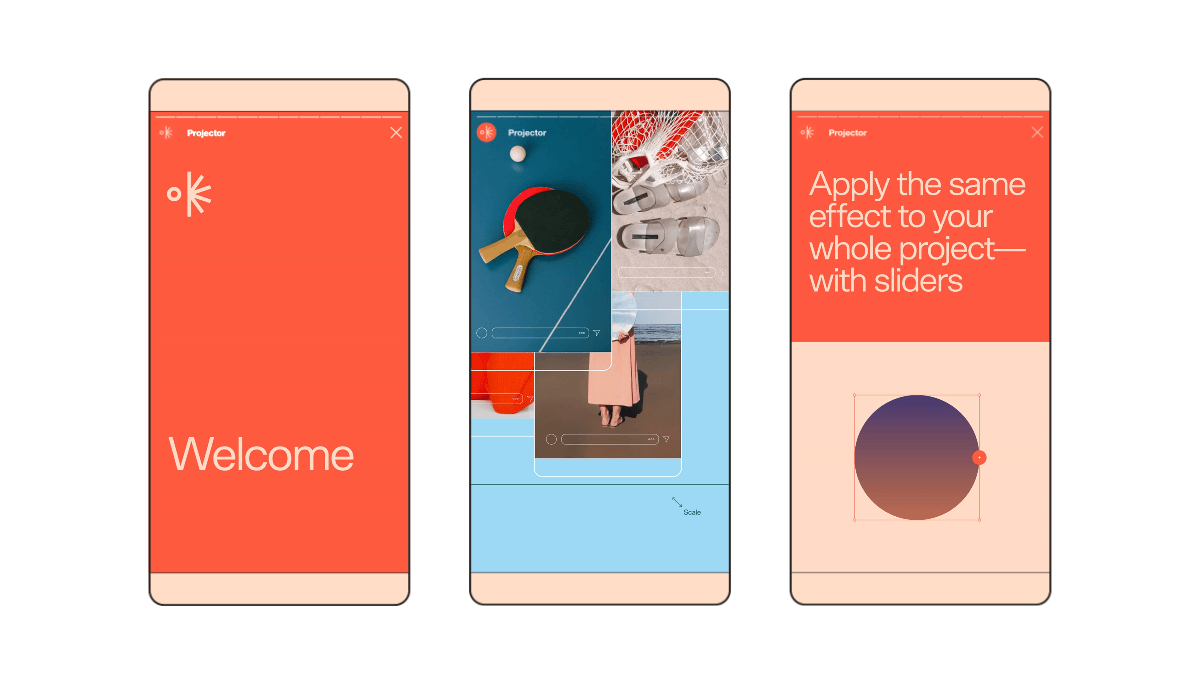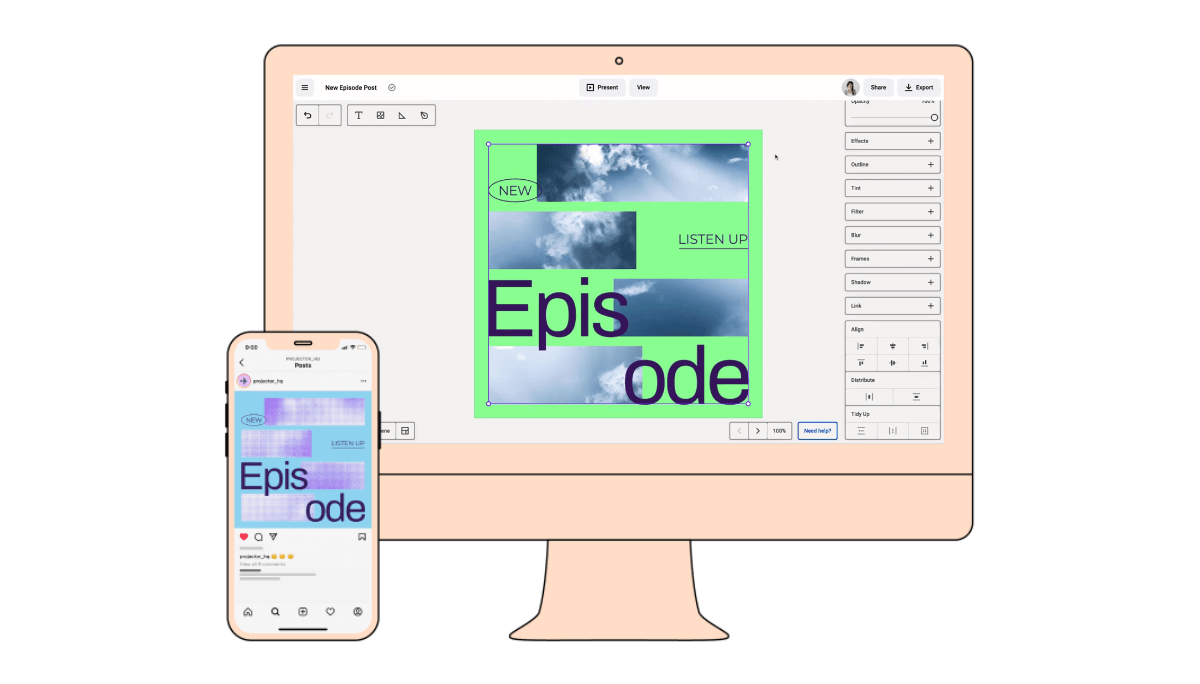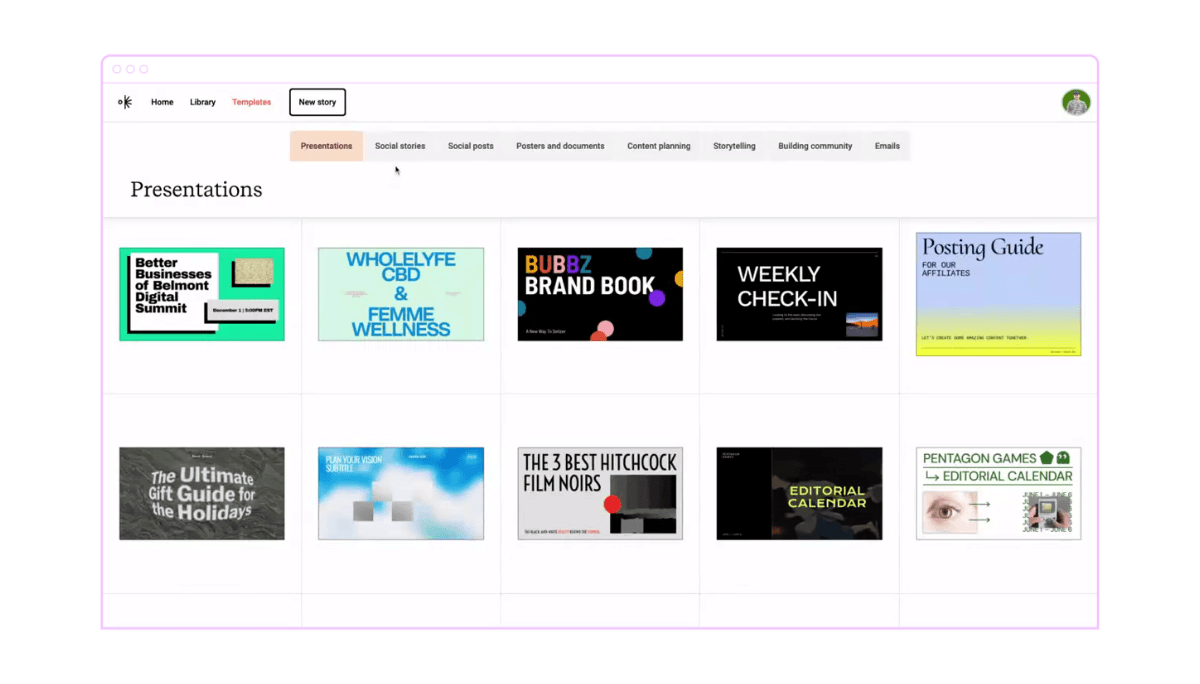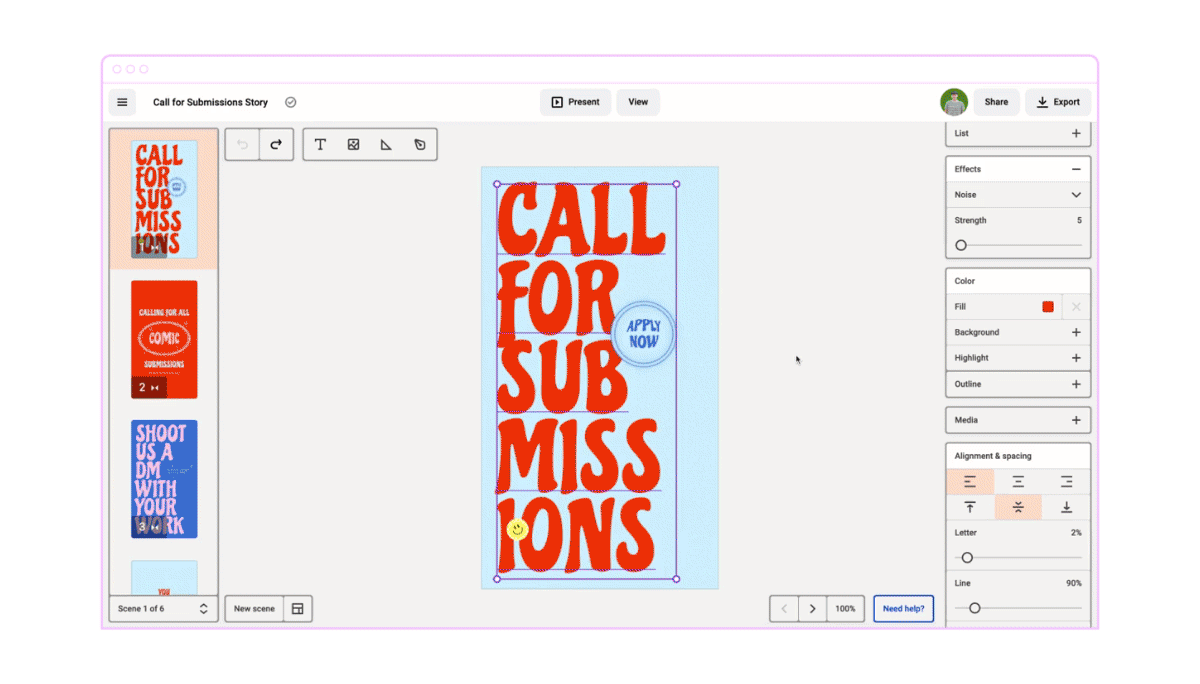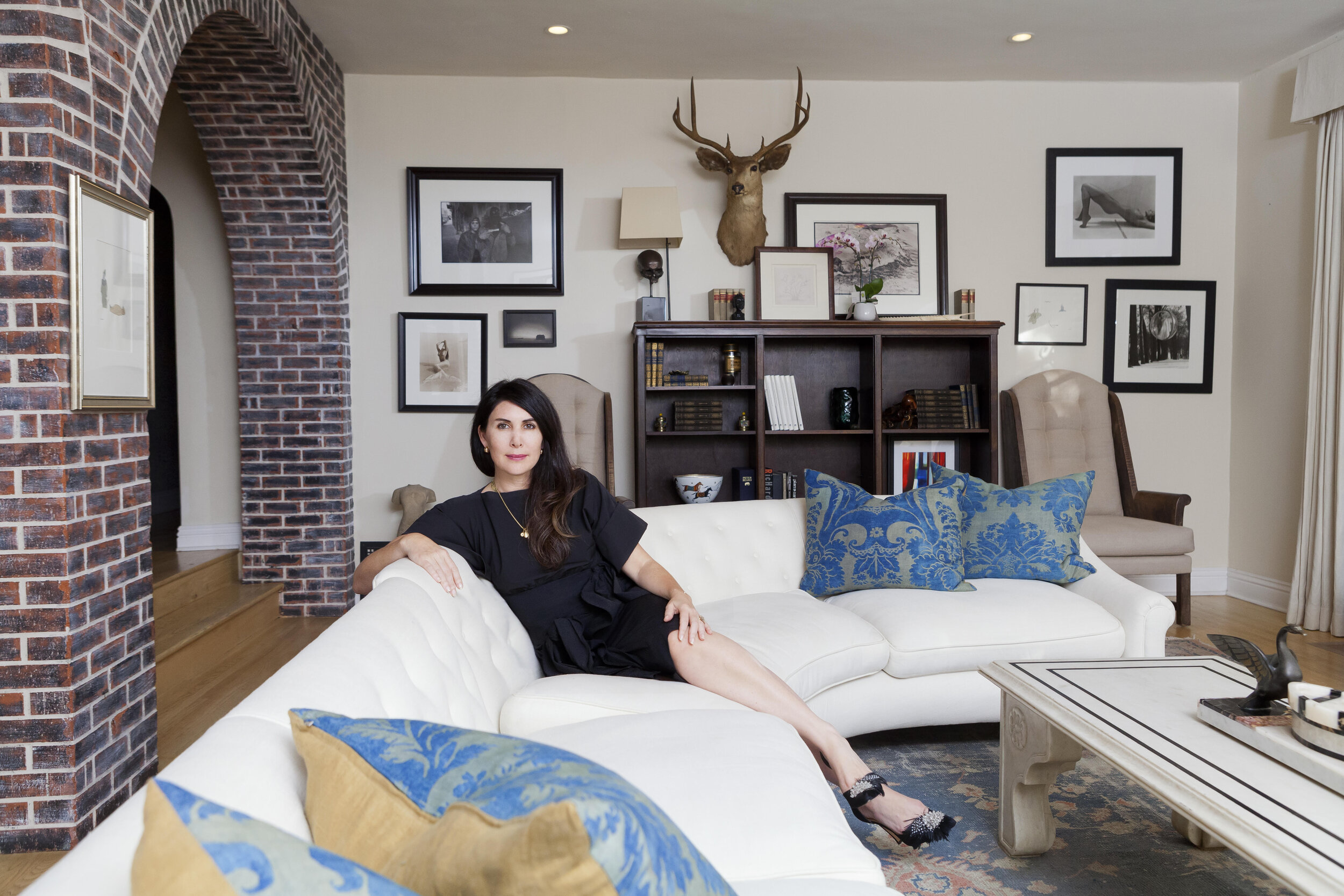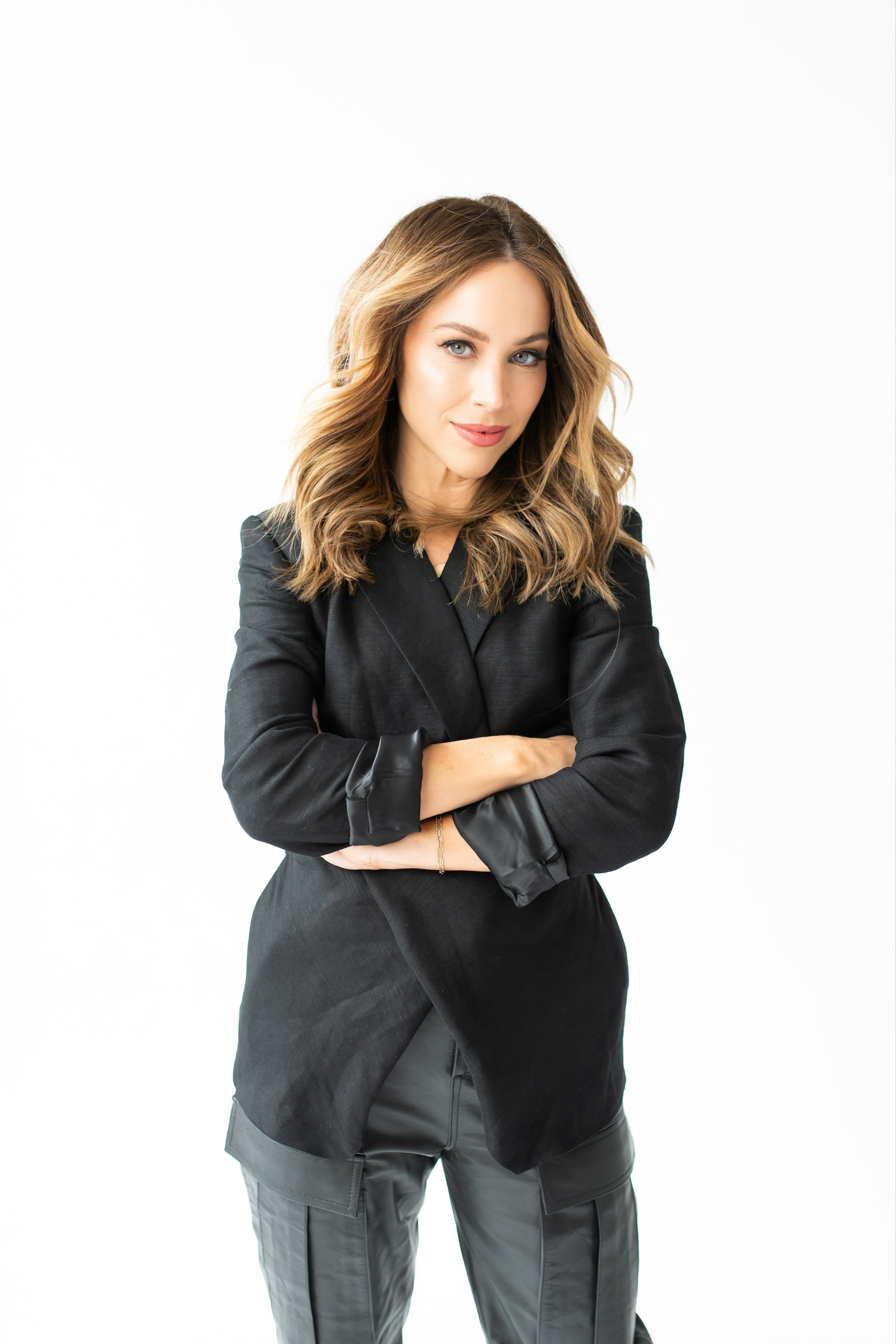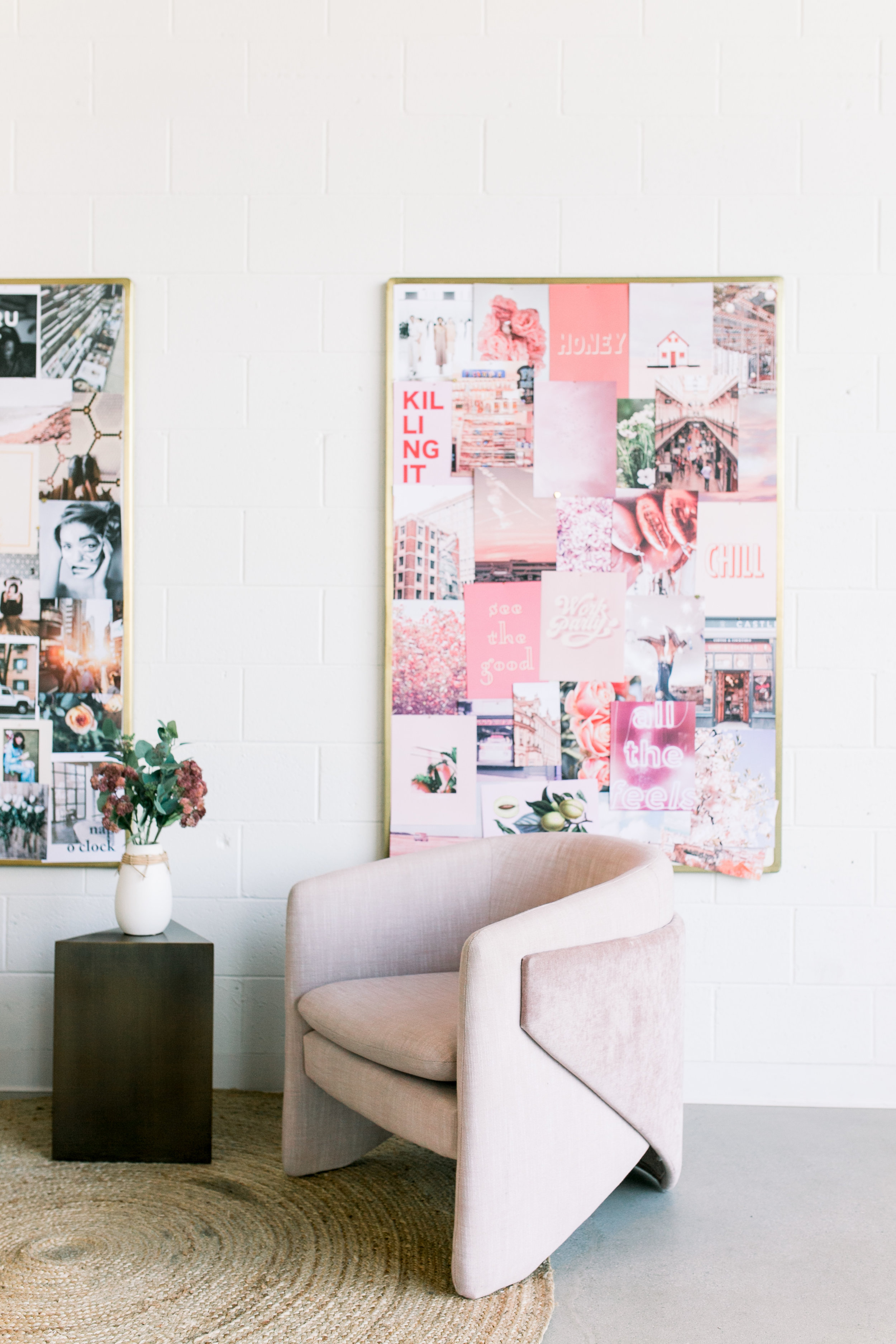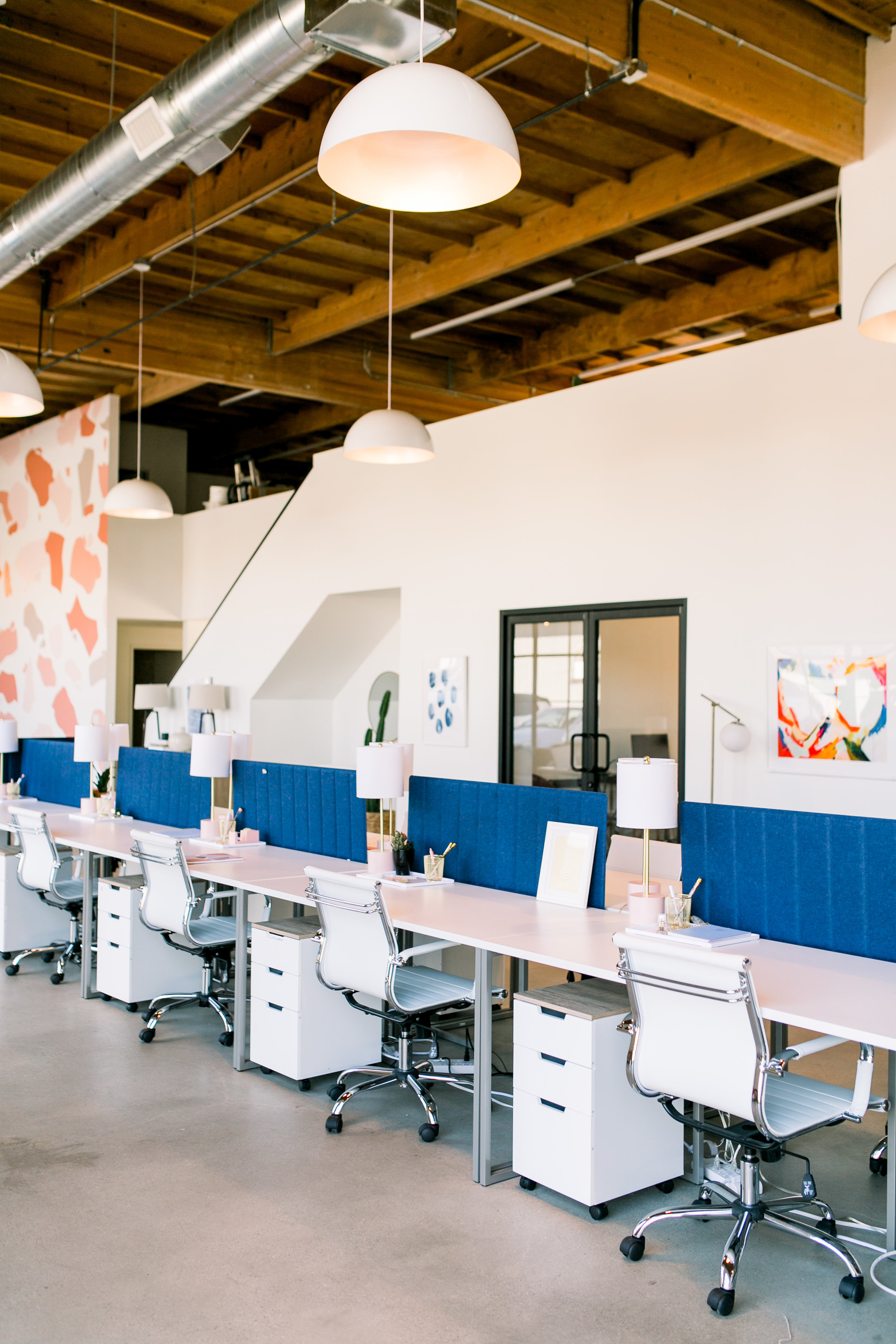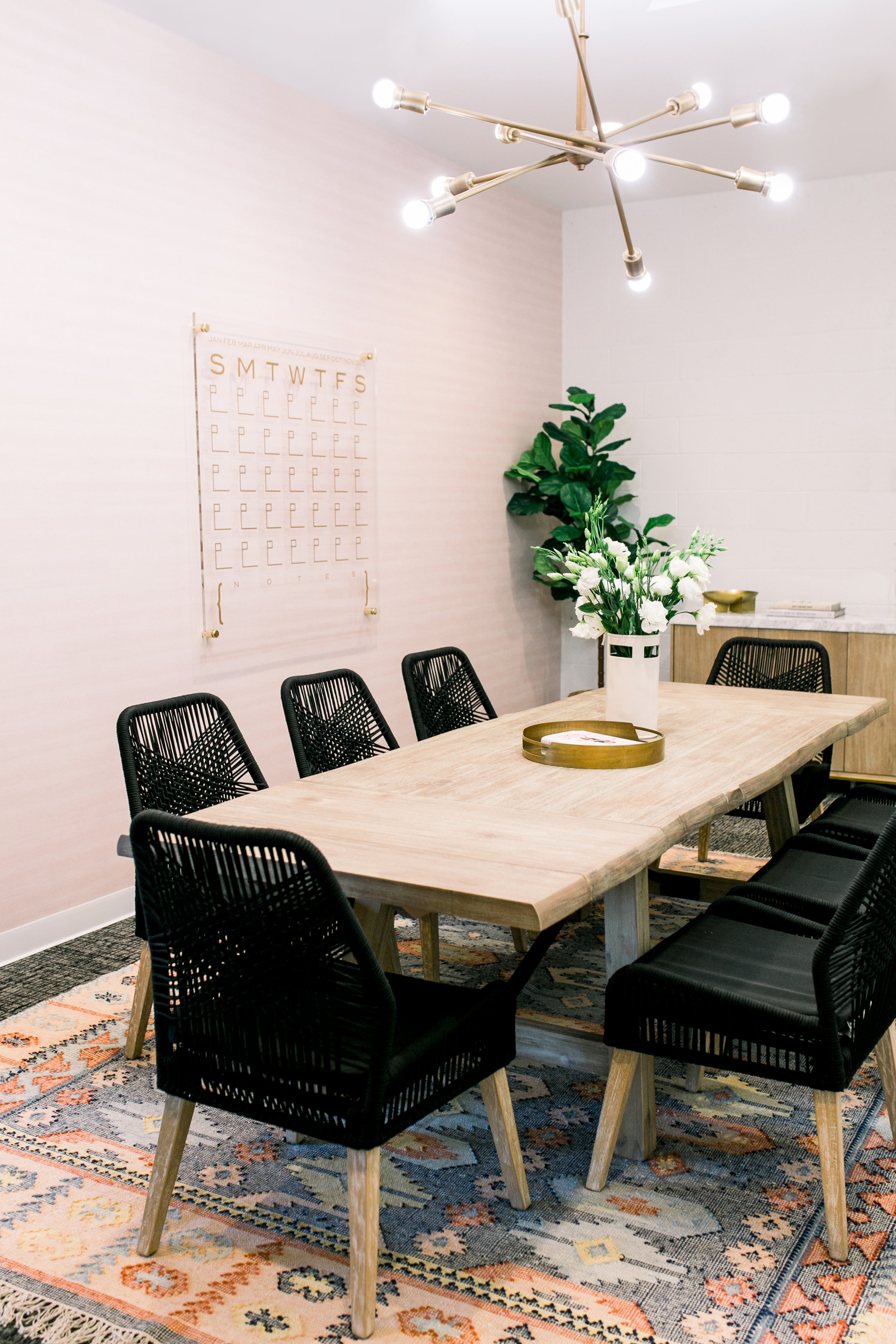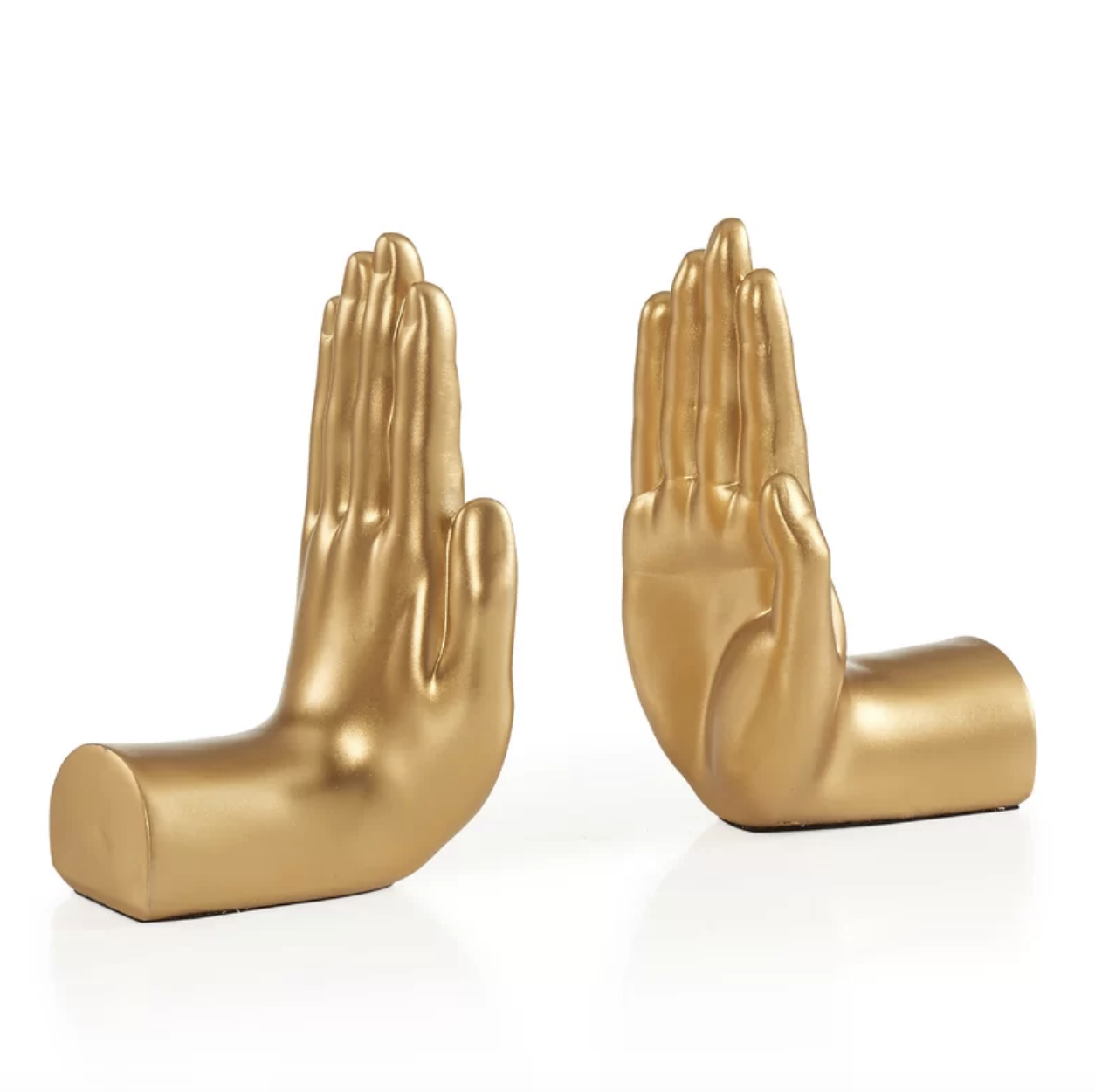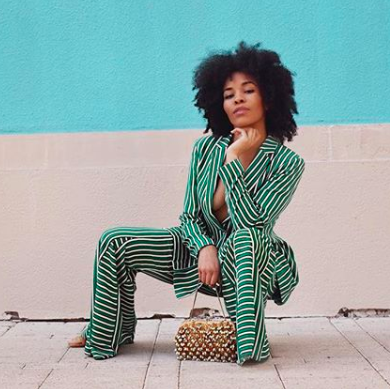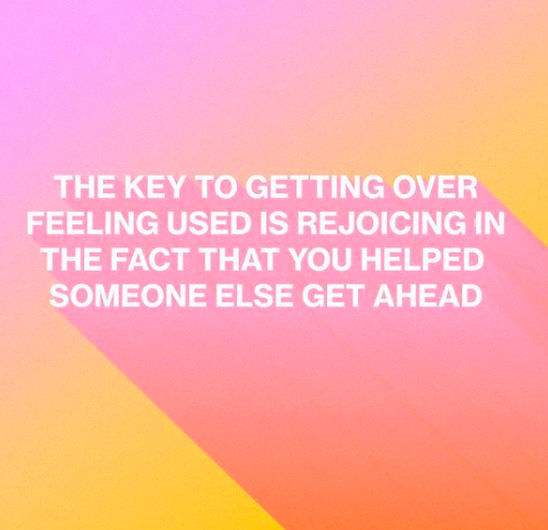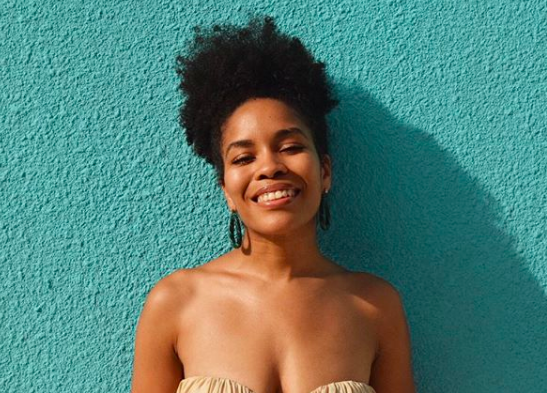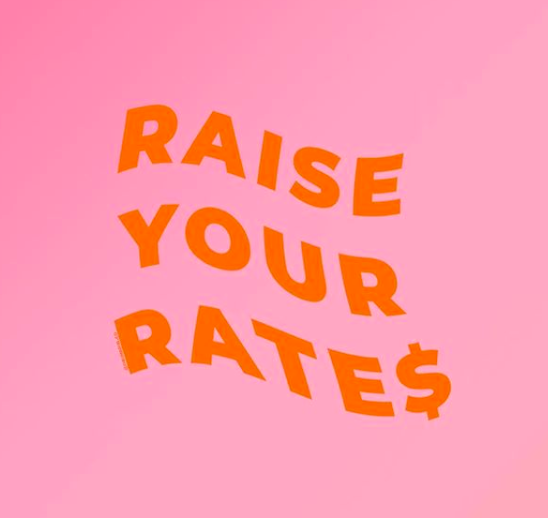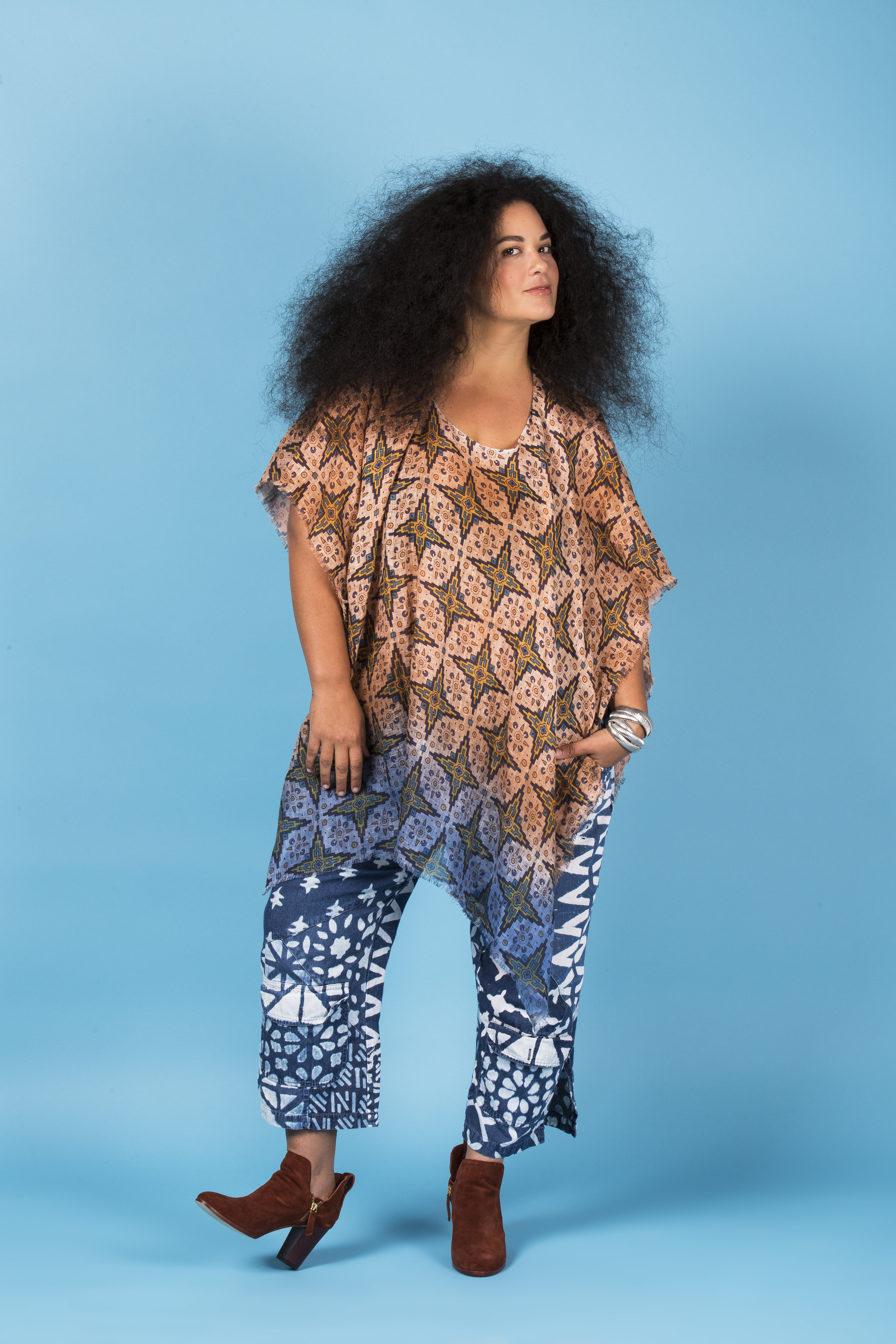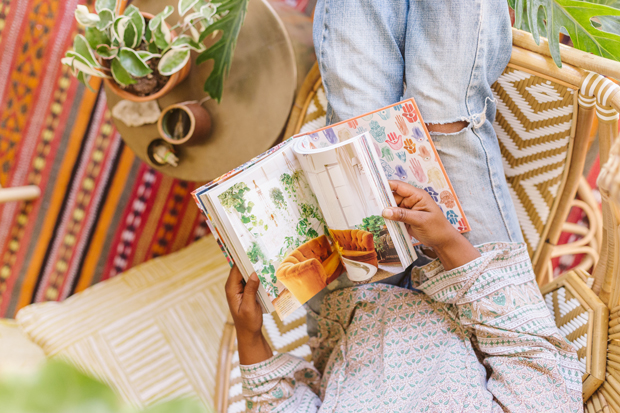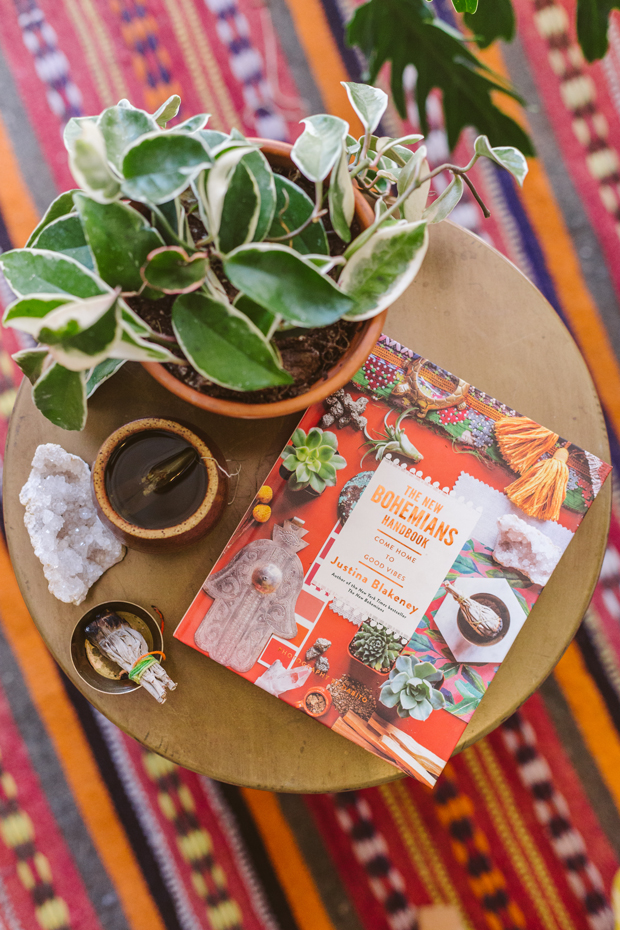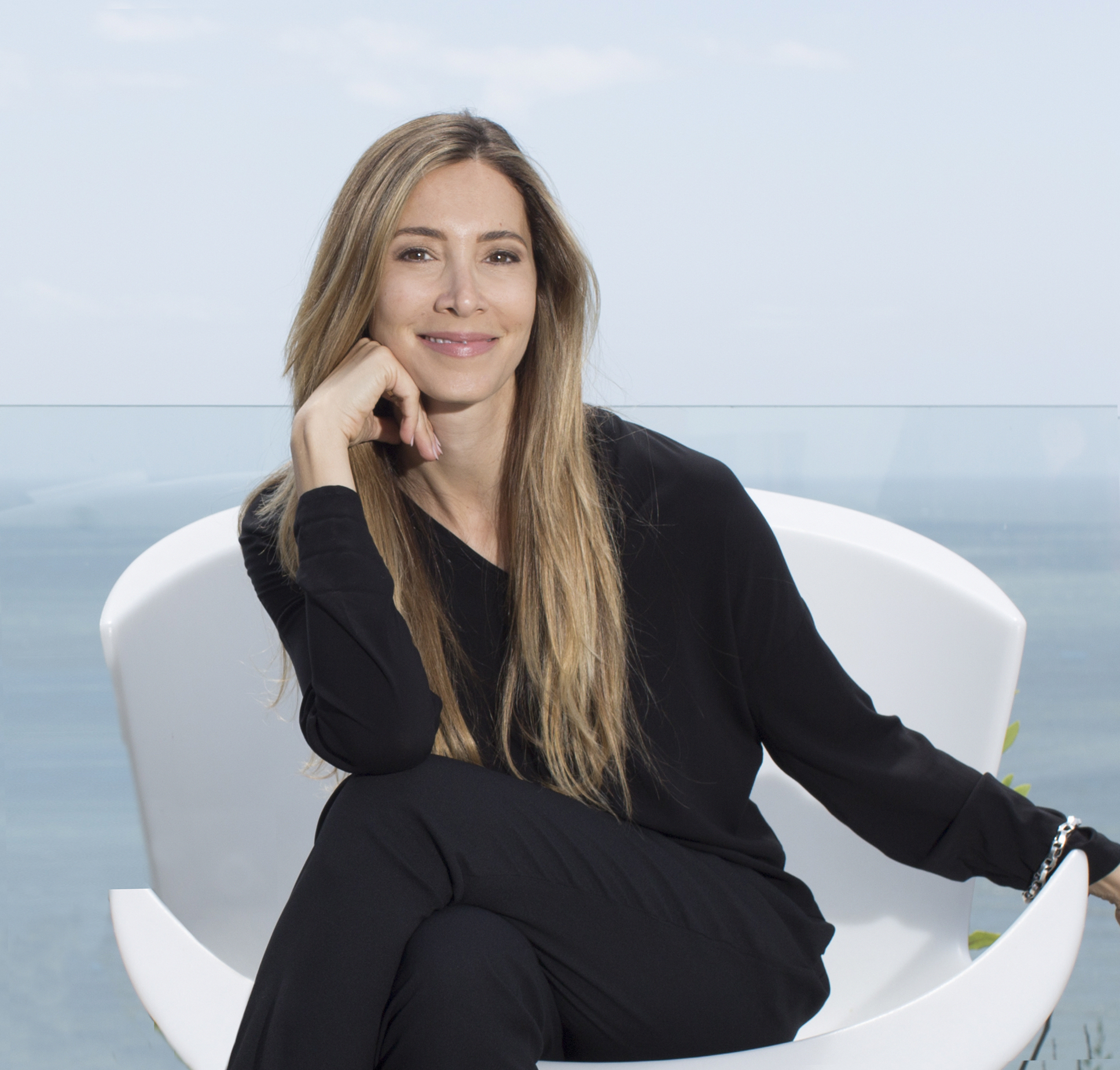Projector is the Collaborative Graphic Design Tool We’ve Been Searching For
With a robust selection of templates, tools and features, Projector is the collaborative graphic design tool we’ve been searching for.
The power of visuals in modern communication is undeniable. In the world of social media, 63% of content is made up of images, and according to Quicksprout, content with quality visuals receive 94% more views and engagement than those without. Strong visuals play an important role in all facets of business, helping you connect with an audience faster, and with more emotion, than words alone.
If you own or operate a business, you’re in the business of visual communication. From Instagram and TikTok to pitch decks, presentations and print materials, visual language filters into all channels and mediums of your business. The right designs can help bring your brand to life–and thankfully, tools like Projector make it easy for teams to create professional-looking visual content, regardless of whether you have a design background or not.
With a robust selection of templates, tools and features, Projector is the collaborative graphic design tool we’ve been searching for. It’s an entirely browser-based platform that helps teams work efficiently and in real-time. (Think: Google Docs for graphic design). From launching a social channel from scratch, to crafting a deck for your next campaign, in Projector, it's fast (and fun!) for anyone to create multimedia stories for any channel or medium. Keep reading to learn more about Projector, our favorite new design tool, and discover all the ways it can help you build and scale your business.
What is Projector?
Projector is an entirely-browser based, collaborative tool for designing visual content. It’s powerful enough to support advanced multimedia layout and editing, but accessible and approachable for someone who’s never used professional design software before.
Who is it for?
Anyone who creates content for work. In Projector, people from all different kinds of skill sets–– writers, brand strategists, community managers, executives, marketers, creatives and designers –– can work together in one space that feels approachable and powerful for each of them.
What can you make with it?
Presentations, social posts and stories, email banners, zines, zoom backgrounds, digital flyers, pdfs, videos, and GIFs to name a few... Start from scratch, or get inspiration from a curated library of modern templates that can easily be customized in any way you want. Whether you’re running an Instagram channel for a brand, trying to launch a creative-side hustle, crafting a proposal deck or looking to spruce up your own portfolio and feed, Projector gives you one space to create everything.
How does it work?
Browse a curated library of professionally-designed templates (i.e. Instagram templates for highlighting your product or community, presentations for planning your editorial calendar, etc)
Stylize text and add movement with special media effects. Fill letters with videos, images, or GIFs, and add gradients, shadows, or outlines to create your own unique text styles.
Discover imagery, icons and more with the best content integrations via Unsplash, Shutterstock, Giphy, and Noun Project (for free!)
Share your story with a link to comment, collaborate, and present in real-time.
Why should you try it?
If you're looking for a more efficient and collaborative way to create visual content, Projector can help. They're making it easier for more people to connect with their audience through modern, multimedia design — and we all know good design is good business, after all.
How This Fashion Stylist Turned Interior Designer Carves Out Time for Creativity
Lots of water and deadlines are a must.
Photo: Courtesy of Estee Stanley
Welcome to our monthly editorial series A Day in the Life where we ask successful women we admire to share the daily minutiae of their professional lives, from the rituals that set them up for success to their evening wind-down routines. This month we sat down with Estee Stanley, the fashion stylist turned interior designer who is streamlining the way interior designers and architects work with clients through her agency The Eye. Read on to learn how this enterprising entrepreneur stays focused, manages her inbox, and finds the time to binge-watch “Losing Alice” at the end of the day.
Tell us a bit about The Eye. What whitespace did you see in the market? What need did you want to fill?
Before transitioning into interior design, I spent many years working as a celebrity fashion stylist. During my time as a stylist, I was represented by The Wall Group. Although hesitant at first, the benefits of having an agent became so apparent (more money, less hassle) that giving up a cut of my hard-earned money became beyond worth it.
Then, after transitioning into interiors, I couldn’t find the same opportunity for representation, and I never understood why. Having someone to advocate on your behalf, negotiate your contract and fees, and act as a liaison between client and designer throughout the project creates the space for creatives to do what they do best, create! I want to implement this already proven successful representation model into the design industry, helping bring more transparency to all!
Are you a night owl or a morning person? When do you do your most important work and why?
I would definitely say I am a night owl. My creativity often sparks after a few drinks, however, my mid-morning fully caffeinated self is definitely my most prolific self.
What time do you get up? What’s the first thing you do upon waking?
I typically get up around 7:30 or 8:00 am, which always feels too early. After immediately brushing my teeth, I try to get some light stretching in, and then it’s off to get my kids organized for their day.
What does your morning, pre-work routine look like?
My mornings often look different (I have my kids to thank for the spontaneity) but I do my best to fit in yoga or tennis whenever I can!
Mark Twain said, “Eat a live frog first thing in the morning and nothing worse will happen to you the rest of the day.” What’s the first thing you do when you get to your desk?
First thing is to check and make sure I have my iced tea and water easily accessible. Once the caffeine component has been secured, I typically start my day by checking the news.
What are you working on this week?
Currently, we are in the development stage of creating The Eye’s very own Youtube channel. Our channel will include a variety of unique design shows featuring many of the talented designers on our roster. I love TV so brainstorming and pitching shows has been very fun for me!
What’s been the most rewarding part of running your business? The most challenging?
There are a ton of rewarding aspects of this job, but my favorite is being the person to our designers that I always wish I had in my corner. With The Eye being the first-of-its-kind agency within the design industry, one of the biggest challenges we’ve faced has been educating people on the reason for our services. Considering designers have been working and clients have been hiring long before The Eye ever existed, people wonder why now? It’s our job to show both designer and client the benefits of using The Eye’s services over the ladder.
“Try to section off times in your day to work on certain tasks. That way, you don’t spend too much time doing one thing. It also helps you carve out more time for creative conversation and long-term thinking.”
—Estee Stanley, Founder of The Eye Agency
Photo: Alexander Design Courtesy of The Eye Agency
Do you ever reach inbox zero? How do you handle the constant influx of inquiries and communication entrepreneurs are so familiar with?
This one is tough for me, as I have to admit I am not a big email person. I am pretty old school when it comes to communication and way prefer someone to pick up the phone and call me directly. Knowing that is way less common in the world we live in now, hitting inbox zero rarely ever happens for me, unless it’s on my phone (since I refuse to install the email app there, lol). That being said, I still love the constant influx of inquiries because they often lead me to connections and opportunities I would have never known otherwise.
What is your go-to work lunch?
Typically, I’ll eat a Nicoise salad or an Italian chopped salad with no meat. However, recently I have been incorporating a lot of banana bread into my diet as well, as I started a side company called Gone Bananas Bread as a way to raise money and give back to charitable causes across our community. Check us out at gonebananasbread.com.
What advice do you have for balancing the minutiae of day-to-day tasks with big-picture planning?
My advice would be to not get too bogged down in your email inbox. Try to section off times in your day to work on certain tasks. That way, you don’t spend too much time doing one thing. It also helps you carve out more time for creative conversation and long-term thinking.
What are some work habits that help you stay healthy, productive, and on track to reach your goals?
Lots of water and deadlines! Working on a deadline always helps me stay focused and more productive.
Any favorite apps you use regularly?
Woodoku, The Hoffman Process App, Instagram (obviously), and Bitmoji.
What are you reading, watching, or listening to right now to help you wind down at the end of the day?
Reading: “Siblings Without Rivalry” (LOL)
Watching: Where do I begin… I am a complete TV junky. Right now I am watching “Losing Alice” and “Possessions,” and I just finished “Money Heist” and “The Split.”
When do you go to bed? What’s your “optimal” number of sleep hours?
14 hours is my optimal amount, only when dreams come true. However, I settle for 8 and usually am asleep by midnight.
What’s the most rewarding part of your day?
2 part answer!
1) Seeing my kids getting along and realizing how much they teach me on a daily basis.
2) Having fun at work and finding the humor in the small day-to-day things. If you can’t find a smile or laugh while on the job, I would suggest reassessing what you're doing.
MORE ON THE BLOG
Want a Chance to Win a $1,000 Shopping Spree From Joss & Main? Enter Now!
You’ve got to be in it to win it.
This post is in sponsorship with Joss & Main.
This sweeps competition is now closed. The winners have been notified. Thank you for entering.
There’s no denying the power of your environment on your productivity and creativity—even science agrees. And we have experienced this change first-hand. After our own C&C Clubhouse was re-designed, the entire team felt even more inspired and motivated to create something spectacular.
We have Joss & Main to thank for helping us design an of-the-moment co-working space that fuses fashion and function. We’re really into their furniture and décor—it balances the modern aesthetic we love with a classic twist. And their curated collection of office essentials is no exception. Whether your business is taking that first big leap and moving into an office or you’re looking to refresh your own office, Joss & Main is our go-to for designing a space to inspire your next big idea.
And today, we’re thrilled to announce that one lucky person will win a $1000 shopping spree at Joss & Main to design their own dream office as well as a one-year-long digital membership to C&C Insiders. So enter below for your chance to win—good Luck!
Enter to win a $1,000 shopping spree with Joss & Main!
Official Sweepstakes Rules. Please check the Joss & Main Terms & Conditions for more details.
While you’re waiting for the winner to be announced, shop some of our top five favorite office pieces from Joss & Main below:
Joss & Main Hand Non-skid Bookends
$23
Joss & Main Burlap Wall Mounted Bulletin Board
$49
Joss & Main Frederick Upholstered Dining Chair
$149
Joss & Main Phoebe Accent Cabinet
$148
Joss & Main Writing Desk
$135
Shop the entire home office collection at jossandmain.com.
How This Brand Strategist Is Building a Girl Gang for Black Creatives
“That’s what wakes me up in the morning: knowing I’m collaborating with women from all walks of life to design the brand of their dreams.”
Brittany Wilson is a woman you want to know. Formerly in fashion and marketing, she launched her design and branding studio, The Idea Girl, in 2017. Since then she’s been helping budding entrepreneurs and business owners figure out their company mission—and then going out and living it.
Below, Brittany shares the secret to her success.
What inspired you to start The Idea Girl? What need did you want to fill?
Two things actually inspired me, for one my multifaceted background often left it hard for me to find a career I thought I could grow with and hearing my family say things like “Jack of All Trades, master of none” didn’t help much either. I love creating beautiful things to make people feel good about themselves, and I’ve had many vehicles serve that common core. I’ve worked as a sales associate, visual merchandiser, and assistant buyer to passionately shop with strangers for their most intimate moments. I’ve also worked as a marketing manager, office assistant, and even become an operations manager for a Mitsubishi dealership to spice up the skillset. By age 24 I was working a crappy receptionist job and fighting a tough battle with depression. I was tired of getting hired, fired, and climbing up the ladder and losing to office politics.
Sick of being in a slump, I decided to create the life I wanted including a job I’d fall in love with. I realized that I was the go-to person at work and in my circle for all things aesthetic related from fashion to interior design, which created the “aha moment” of calling my brand The Idea Girl. I decided to take all my skills and talents and create a job title that included all of my expertise in one. I want to show women everywhere that we are malleable, fluid, and multidimensional and can manifest our thoughts into action. I want to show them that having a title holds no value and break from it boundless to be the creative forces that we are meant to be.
Two, the lack of economic power and freedom within the Black community is what shifted my focus to working with women of color specifically. Art, creativity, and talents are typically frowned upon in our culture due to the older generations faith in the hospital and government jobs. Many of us are tricked into believing that a college degree will provide us with security and a moderate paying job will be the safety blanket we need. WRONG! I wanted to break that generational curse that’s kept so many young people of color from pursuing their dreams and tapping into their innate and artistic abilities. Through The Idea Girl, we empower women of color into entrepreneurship by helping them dig deep within to monetize off their skills and talents through adept strategy and emotive design approaches so they can shine confidently next to their competitors and communicate with their clients. We needed a space where we can thrive financially, spiritually, and professionally to break generational curses and pass down our wealth. There weren’t too many creative safe havens for women of color, so I created one.
“Decide what makes you feel good and progressive. Stress is real, not-so-easy clients are real, and time is limited—so make it worth your while and feel good all of the time.”
You work solely with woman-owned startups and female entrepreneurs. What drove you to make this business decision?
I love working with women because I am a woman. Women are fighting adversity on a daily basis from their wages to their body rights. Starting my own business lit a fire in me that I never know could be ignited, a feeling so contagious that it was obligatory that I spread it. There is nothing like seeing another woman finally recognizing her worth, reclaiming her time, and fully investing her talents into a business to help solve issues both big and small. Forbes recently said that Black women are the fastest growing entrepreneurs in the nation, it makes me extremely proud knowing that I am one of the people behind the scenes accelerating this spike through my work to help women like me shine.
What’s been the most fulfilling part of your job? What about the biggest challenge?
The most fulfilling part of my job would have to be the look on my client’s faces when I bring their brands to life with design. Seeing is believing, so once they start seeing mockups and prototypes it’s like “Woah, sh*t’s getting real!” and the ideas and inspiration begin pouring in abundance. Their confidence beams through their smiles, and in that moment I know I am fulfilling my purpose. The biggest challenge would definitely be balancing my personal life and prying myself away from my laptop. Sometimes I’m so obsessed with what I do, that I’m afraid to go to sleep in fear of missing out of something. I even have to watch my dialogue when speaking to my boyfriend, friends, and family so it isn’t always work-related. My mind keeps me up, and I’m always overworking. I have to be extremely mindful of my body and the messages it sends me. If my body says she’s had enough, I know it’s time to hit the lights and to hit the sack. My biggest challenge staying healthy (mentally), keeping my body going, staying hydrated, and keeping anxiety at bay.
In the FAQ section of your website, you post your studio hours. This isn’t a common practice among entrepreneurs. Why do you think it’s important to let clients know your availability?
A friend of mine was actually the one who encouraged me to enforce office hours to set professional boundaries between my clients and I. There would be times where I would receive emails at 3AM and felt anxious and reluctant to answer every request at any given moment. It was wearing me down, so for the sake of my mental and physical health, I keep my office hours up to let my clients know the times they can catch me working and when they can get a response. Communicating that in the most professional way possible is also key. I let my clients know that I have every intention of completing their requests and I politely reiterate my policies and all possible options we can take to move forward. It’s important to inform clients and prospects the times they can reach me, but it’s just as imperative to let them know when I’ve clocked out for the day. I also have specific days set where I take phone calls that way I won’t lose track of time and can focus on my design projects for most of the week as that can also cause major distractions. Having a work schedule actually helps me leave work at work, so I can enjoy life outside of it; money isn’t the key to happiness but peace of mind most certainly is!
Time management definitely taught me the importance of managing effective office hours. You have to time everything you do and decide what makes you feel good and progressive opposed to funky and regressive. Stress is real, not-so-easy clients are real, and time is limited so make it worth your while and feel good all of the time. I set my boundaries with time and let people know to respect it in the sweetest and most professional way possible. Also, it kind of gives me a reason to light a spark my clients. It’s like being a coach or teacher, teaching them the importance of slaying their business goals in between there 9-5pm. Plus what I normally do, my clients follow suit to improve their lives. When I make better use of my time, so do they, and I love impacting them in that way.
You host GRLPWR Launches to help business owners hone their brand strategy and marketing solutions. Tell us a bit about what that process entails.
The GRLPWR is a combination of brand strategy, marketing, and creative solutions individually crafted for each brand I work with. Typically for business newbies or seasoned girl-bosses who want to implement a new endeavor, I work side-by-side with women to help get their ideas out of their heads and into their pockets by building out content plans, connecting them with ladies in my professional network who can help them execute their vision, and exploring future opportunities by mapping out their objectives and aligning them chronologically according to what makes the most sense right now in this moment. I give my clients the freedom to think out loud and devising a plan to get there from A to Z, figuring out where to monetize and what part of their business to invest in first. We start off with deep brainstorming where we formulate ideas and concepts with action plans to get started. Then they go through a series of workbooks to develop their brand and communications strategy before we develop a customized vision board before executing the launch.
“The Idea Girl Gang celebrates Black creative women by sharing a safe haven for them to network, find jobs, learn skills and join a sisterhood of ‘sistas’ ready to cheer them.”
You created the Idea Girl Gang to help black women in business find work and skill swap. How is the IGG different from other women’s career groups?
In the Black community there are sorority and fraternity organizations but very few that target Black women that are taking the road less traveled in not-so-ordinary fields. The Idea Girl Gang celebrates Black creative women by sharing a safe haven for them to network, find jobs, learn skills and join a sisterhood of “sistas” ready to cheer them. IGG welcomes all female-identifying creatives of all colors, classes, and creed. Although we primarily focus on providing professional resources for Black women, we welcome our community to all people who aspire to uplift and elevate women of color.
What do you think are some challenges that face female business owners and entrepreneurs today?
I think one of the main challenges is not being taken seriously or seen as a “boss” like our male counterparts. By stereotypical measures of gender roles, women are assumed to be incapable of making tough decisions or can’t be taken seriously if our clothes are too tight. Women are badass and we get the job done with no questions asked. We wear many hats and take on jobs as counselors, strategizers, designers, and planners. Sometimes I find myself adding a bit of bass in my voice when getting a point across or during a negotiation to show people I’m not here to play and that I am just as deserving to have a seat at the table. As a woman, it’s important to have an organization that promotes love for other women and sisterhood so we can be there for each other and break glass ceilings together.
“That’s what wakes me up in the morning: knowing I’m collaborating with women from all walks of life to design the brand of their dreams.”
Who are some female designers and entrepreneurs (maybe even some of your clients!) who inspire you? Why?
Lotta Nieminen is definitely the Queen of Design in my book. Her style is so minimalistic, clean, and abstract. Jade Purple Brown is also one of my favorite illustrators with her use of bold splashes of color and homage to women of color. Most importantly, all of my clients inspire me as they are the true Idea Girls. They come up with the most innovative and creative inventions with great intent. Not only are they slaying the day at their 9-5’s they’re rushing home to speak with me to build an entire empire. That is what wakes me up in the morning, knowing that I am collaborating with women from all walks of life to design the brand of their dreams.
What are you most looking forward to in 2019?
For 2019 I am most looking forward to the unknown, and just living life spontaneously. This year has started off amazing for me thus far with my first speaking engagement, two successful events, and traveling to meet my IG girlfriends in real life! I’ve been opening myself up to receive more love and I’ve been walking blissfully blind, hand in hand with faith. I trust myself a lot more, and I trust whatever the Universe has in store for me. Opportunities and doors are opening everywhere so I am ready for whatever 2019 has to bring. More life, more love, and more vacations!
MORE ON THE BLOG
This Sought-After LA Designer Has So Much Going On (Your Head Will Spin)
But she is THRIVING.
“Take a deep breath and listen, practice some restraint.”
Those are the words of current breadwinner, mom, and captain of a design business that’s rapidly expanding: Justina Blakeney, founder of The Jungalow. The interior design boss is the first to admit that “no one knows how it’s going to go," but handling uncertainty is a big part of entrepreneurship. "There are days when I feel like things aren’t balanced or chill, when I have to work a lot and travel,” but, she says, “I think it’s important to understand in what type of environment your thrive. I flourish in the multi-hustle world.”
Her environment is lush. Full of color, vibrant patterns and plants; it’s a design style that says no to minimalism. In a way, it’s a multi-hustle of its own.
Images via The Jungalow
And with a New York Times bestseller, The New Bohemians (which, she wrote and shot in less than three months), as well as her new release (as of yesterday!) The New Bohemian Handbook, collabs with Living Spaces and Beyond Yoga, a Sunset Magazine cover, a booming design business and blog, a tot at home, multiple employees at her office space, and plenty more in the works, Justina has reached a point where she gets her gig. “Having a lot going on at one time really suits my personality,” she notes.
"I flourish in the multi-hustle world.”
Tweet this.
Most Jungalow income still comes from social media and the blog, but the business is expanding rapidly. What exactly is in the works? “The Jungalow world takeover.” NBD. And it’s moving fast— a pace she is most comfortable with. “People need to be able to keep up,” she says, “and I have no patience for people who work slowly. Being able to be fast is how you can make money. You have to be quick.”
Justina says, “I worked really hard to not be known as a blogger. I wanted to be known as a designer first.” The plan with the furniture line is to develop the wholesale side of the business first. That way, “by the time we get into a retail we’ll be a brand name.” She describes ecommerce as “an intimidating whole new universes.” Citing the customer service, sales tax, and returns. “But what I keep telling myself,” she explains, “is that it’s not hard, it’s just a lot. And the hardest part is making the leap.” Especially when you're conditioned to think business is a man's game. “There was this moment,” she explains, “where it became very clear to me that being good at business was not about being good at numbers, or understanding the Dow Industrial— that’s what I thought being ‘good a business’ meant.”
“As women,” she says, “we’re trained to think that business is not a woman’s game— it’s not left-brained. But being able to relate to people has proven to be a much bigger asset than I knew.”
Developing her brand meant make hard choices, like passing on 50k opportunities because they “didn’t make sense,” both aesthetically and in her gut. She’s driven by authenticity, while also understanding that “businesses are machines that are created for profit. You can’t depend on someone else for your well-being. It’s something I always have in the back of my mind— to make sure I have my own back.”
Still, her support for other women and women of color is unwavering. “Female empowerment is about having your own back and having the back of your sisters,” she insists. “It’s so hard for me to watch women not supporting other women and men not supporting women. As a woman of color and as a woman, it’s painful for me to see. It’s so easy to be catty and jealous, but it’s so counter-productive. It’s so much easier to be supportive.”
Styling provided by Reservoir LA. Hair and makeup provided by Glamsquad. Photography courtesy of Light Lab and Woodnote Photography.
MORE FROM OUR BLOG
A Day in the Life: From Auto Designer to Sustainable Fashion Boss
Designer Vicki von Holzhausen grew up next to the Art Center College of Design in Pasadena, a school she calls, "one of the best for design." In high school she attended their industrial design classes where she discovered a love for the automotive. "Cars," von Holzhausen says, "are basically the most intricate and impactful products one can design so I immediately gravitated to them." She ended up attending Art Center College, in CA as well as on their European campus, where she was exposed to the German automakers which lead to an award-winning career at Mercedes in Germany.
Though it's not a world inhabited professionally by many women, von Holzhausen says, "the interesting part is that 85% of car purchasing decisions are made by women so there should be more women in it. I think it's a matter of exposing female design students." She's thankful she was exposed at a young age. She's also married to Tesla chief designer Franz von Holzhausen, who certainly knows a thing or three about sustainability.
But as of 2015, the designer made the full time switch from automotive design to handbag designer with the launch of her sustainable Malibu-based von Holzhausen bags and accessories-- product set apart as a result of her time in auto design. As a lifelong career fan of German industrial designer, Dieter Rams, the founder explains that she still abides by many of his design principles. "The ones that resonate with me the most are that good design should be honest, aesthetically pleasing, and environmentally friendly. My goal was to build a brand based on the principle that I believed in: a future-minded approach, timeless style, and sustainability."
"Good design should be honest, aesthetically pleasing, and environmentally friendly."
Tweet this.
With her eponymously named von Holzhausen line she mixes old world techniques with new, both of which she says, "play a role in our sustainable approach." For instance, the brand uses an innovative substitute for leather they call "Technik-Leather," which greatly improves the waste factor. "Since Technik-Leather is created in rolls, unlike cow hides," she shares, "there are no irregular edges, allowing our patterns to lay side by side with little waste between each piece. Our traditional approach has to do with using local talent here in Los Angeles to create our bags and accessories. We also finish all the details by hand since that's the best way to ensure the highest quality. We paint all the edges of each bag by hand which looks amazing and helps ensure longevity."
We caught up with the founder to find out what a day in the life of a sustainable designer looks like, what time she calls it quits, and what she learned from her design school all-nighters.
6:30am – 7am
I wake up early to check any urgent emails and spend about ½ hour going through my daily to do list from the day before. I try and get a workout in on my good days. My quick version is an app called SWORKIT and I do the 20minute core work out. My long version is a H.I.T. class at my local gym, but I can only squeeze those in on days when I have a light morning schedule.
I get a coffee in during my work out. Preference is a black Blue Bottle pour over.
7:30 – 8:30am
Shower & dress. If I’m visiting the factory where I produce the collection, I usually wear my typical uniform like a pair of slouchy jeans and a silky button down shirt or tank and some easy slides. If I’m working at my desk, I usually wear something like a jumpsuit or tank dress with one of our new belts to make it look more put together.
Around 9am
I spend at least 1 hour with emails and figuring out the day. I eat breakfast either at my desk or on my way out the door.
I always try to be flexible when unexpected requests get thrown my way and I’m used to switching up my routine all the time. As a young business, one of the advantages is that we can move quickly without too many issues, so flexibility is a huge benefit.
10am – 11 am
I run errands and try to get to the factory by 11am. We usually review samples in progress 1st and then talk about our weekly production volume and orders in progress.
This can take as little time as ½ hour to as much time as 2 hours depending on the designs we’re working on.
Some days, I meet with other members of my team who work remotely either in the downtown LA Arts District or back on the west side of LA. Those meeting usually revolve around creative direction for photo shoots and marketing strategy.
Other days, I have lunch or coffee dates that revolve around making connections to other entrepreneurs. I’ve learned a great deal from meeting other women who work about the process of building a business.
3pm – 5pm
I’m back at my desk around 3pm to handle any new issues that rise up. Then I try to spend at least a few hours before the end of the day organizing my team for the next few days. I attempt to stay a few steps ahead of everyone so we can meet all upcoming deadlines having to do with things like new product launches, photo shoot production, and website design. There is also an endless amount of paperwork that goes with running a business so I spend a few hours in that department as well.
Most days, I spend at least another hour on various calls during the afternoon since I’m more often than not, sitting at my desk.
6pm
If I have no dinner plans, I take an early dinner with my family and spend time with them until about 9pm.
10pm
I spend at least 1 more hour later in the evening on creative work. It’s a habit I developed as a young designer in school and later in the auto industry when I spent countless all-nighters finishing projects. It’s the time of day with the least amount of interruptions so I take advantage of it.
Images courtesy of von Holzhausen.
MORE FROM OUR BLOG
How Design Star Emily Henderson Really Feels About Working for Free
And changing her mind about the color brown.
NAME: Emily Henderson
OCCUPATION: Designer, Stylist, Boss
ONE DEGREE OF C&C SEPARATION: She designed panelist Oh Joy’s studio!
HOURS SHE’S CLOCKING: Probably six during the day and three most nights, with shopping/writing on the weekends. So maybe 50? With kids taking priority of daytime hours.
SOCIAL PLATFORM OF CHOICE: Instagram for the business, but FB for myself because it’s the best way to keep up on good articles/current events.
PHOTOS SHE’S HEARTING ON IG: I heart what I try to create myself - anything that is both personal and beautiful. Ultimately - if it makes me smile, I double tap that shit.
"If it makes me smile, I double tap that shit."
Tweet this.
Emily Henderson, the HGTV host and designer, stylist, writer and editor of Style By Emily Henderson, thinks perfection is boring. In fact, it’s part of her design philosophy: "I believe that a perfect house is like a perfect person; no one really wants to be around them and everyone secretly hates them."
We tend to agree.
It's this kind of candor that has propelled Emily's career from dog walker to winner of HGTV's Design Star to Target Home spokesperson. Hers wasn't a straight shot to success (because it never is), but from clocking long days, spending time with her 5-month-old baby girl, and son, Charlie, while continually growing her taste and brand, it's success that is hard-won.
We checked in with the incredibly frank entrepreneur to get the scoop on creating a brand, changing her mind about the color brown, and the only time she'll work for free nowadays.
How do you create a brand that stands out? How do you come to understand what your “brand” is?
You need to have a product that is both unique and universal. There are too many people doing interesting things these days, you have to make a product that stands out, BUT at the same time it has to have enough universal appeal that you aren’t selling to 10 niche customers. I always think about Jennifer Lawson. Sure, she is a person, but she is someone that everyone likes and yet she is totally unique (which is why everyone likes her). This is extremely hard to do, but the people I know who are successful have done a pretty good job at it. Give your product a personality and ask yourself everyday, “Do I want to hang out with that person??” If the answer is no, then tweak it because if you are feeling that way, then everyone else is too.
"Give your product a personality and ask yourself everyday, 'Do I want to hang out with that person??'"
Tweet this.
How do you create a “voice”with an image?
It’s all storytelling. You need think about what overall story you are trying to tell every time you produce any content - it's basic marketing. But most of us (small brands) don't have a marketing person or team controlling all platforms. It’s our job to weave in elements of our story through all brands. I am by no means saying that I am queen at this and I think I could be doing a WAY better job. However, here is what I try to do: Show a happy, colorful image (whether it's an interior or my life) with copy that feels personal, informational OR inspirational. If I’m funny I get literally twice the likes, but I’m so busy that it's hard to produce good, funny, beautiful content all day. But that is the goal - pretty and entertaining.
You’ve called it the best marketing tool. But what else about the blog platform was attractive to you?
It’s all mine. Sure we have sponsors, but even they know it's all mine. And sure I have three people that work just on the blog, but there is still a sense of autonomy that we have with the blog that we don’t have with our design clients or my major partnership work. It has such a large audience now, so we really feel like our work is heard, and we have an influence. I know you can have an influence on many platforms, but with a blog you have more real estate to write and share than on social media so your audience is more engaged and reads and listens so much more.
Part of having a successful brand is fluidity. How do you go about introducing new styles to your audience when they’ve come to know and love your style?
It’s hard and people call me out all the time saying ‘but you said you don’t like brown!’ And sure, I didn’t like it, five years ago. But luckily most people are on the zeitgeist train with you and sense the trends and shifts too, and are happy to see someone they know embracing them and showing them how to use them. I started the blog when I was 29 and broke. I’m 36 now so my life has changed - I have two kids, and frankly I kinda want nicer things than I used to. That combo can be resisted by some people who want me to be thrifty and eclectic like I used to be. I’m still the same person, but I've grown up, which is now embraced by an entirely different community.
Have there been times when you’ve done something and thought, that was off-brand? But, you really liked it?
When your brand is yourself then in a way anything that you like is on brand. WAIT. YES. I recently did a sponsored post for a pre-owned luxury handbag website. My mantra has always been - don’t promote anything you wouldn’t buy yourself. I’m from a coastal town in Oregon. My parents are both teachers. In other words I’m not buying $3k handbags both on principal and the money. But before I said ‘no’ to it, I polled my staff and friends and sure enough a lot of people are into handbags - at least the idea of them. So I figured I’d style some outfits with some bags and if nothing else people could see what I’m into fashion-wise these days. I wrote about the brand/bags very honestly - saying it’s a luxury, it’s certainly not for everyone, while letting them know that this site exists if they happen to be handbag people. I really liked the post, the brand got a ton of traffic and purchases and ultimately the readers (even those who had sticker shock) liked the post. So yes, I guess I do things that are technically off brand but still work. It’s a risk though and you have to be very careful because trust is #1. Well, staying in business is #1, trust is #2.
"Trust is #1. Well, staying in business is #1, trust is #2."
Tweet this.
What would you say sets your work apart from others?
I know I’m not the best designer or writer, certainly, but I do think that I write about design and style in a digestible, approachable, and entertaining way. The site feels small even though it’s big, and people know that they are getting real opinions from a real person who is out in the field designing every day.
You’ve said “work for free” when you’re just starting. Do you still agree with that statement?
Hmm. Regarding working for free … I think i’d like to edit that and say ‘collaborate for free’. A large company should not be asking you ever to work for free - no matter how big or small you are. The only time I do work for free now is for magazines. Their model is simply to not pay you for makeover or design content because you will get notoriety and press out of it. But otherwise, I don’t “work” for free.
I also collaborate with other influencers and do their homes for press/portfolio and exposure to a new audience, but I definitely see it more as a collaboration and I make sure that everyone is clear on social media expectations. Most of the time I try to not go out of pocket and get all my assistants’ time paid for - so iIm just volunteering my time but they are covering all costs.
You have to weigh the amount of labor versus compensation and make sure you are being compensated somehow - whether it’s exposure, customers, high res photos of your work and press. IF someone has reached out to you and asked you for your work then they should offer to cover your out of pocket costs.
In short -If you are starting out, think about whether or not the exposure is worth it to you (ask for social stats and get all social requests on paper). If you are already established make sure they aren’t benefiting more from you than you are from the exposure.
Five years from now, where do you see your business?
Digital media is too fluid these days to know what is going to happen next, so we just try to work our asses off, be flexible, and keep our eyes open.
"We just try to work our asses off, be flexible, and keep our eyes open."
Tweet this.
We could go in the brick and mortar direction, we could go licensing lines all over the place direction, and when the kids are a little older I do want to go back into the TV (design show) world. Or maybe it's all of them. I know I want the blog to be both a personal documentation as well as a much larger resource for interior design.
Photos by Mike Garten for Good Housekeeping Magazine.
Arianna Schioldager is Create & Cultivate's editorial director. You can find her on IG @ariannawrotethis and more about her at www.ariannawrotethis.com
Work Notes: Textile Designer Ellisha Alexina
While restoring hand-painted silk scarves for Boston's Isabella Stewart Gardener Museum, Ellisha Alexina was inspire to turned her fascination with art, fabrics, and history, into a full-fledged textile business.
After experimenting with the effects of layering watercolors and natural plant dyes on textiles, Ellisha developed her own mixed media process that blends screen-printing and hand-painting, winning over clients like Johnny Depp and garnering critical success—all before her 30th birthday. Here, the 26-year-old shows us her studios and shares her notes on making it work.
Textile designer Ellisha Alexina in her studio
While restoring hand-painted silk scarves for Boston's Isabella Stewart Gardener Museum, Ellisha Alexina was inspire to turned her fascination with art, fabrics, and history, into a full-fledged textile business.
After experimenting with the effects of layering watercolors and natural plant dyes on textiles, Ellisha developed her own mixed media process that blends screen-printing and hand-painting, winning over clients like Johnny Depp and garnering critical success—all before her 30th birthday. Here, the 26-year-old shows us her studios and shares her notes on making it work. —JM
On getting started
I launched my first textile collection in Fall 2013. I have always had an inclination toward textiles, design, and working with my hands. It was my final year in college when I discovered a way to print fabric by hand painting on silkscreens, and became drawn to the technique.
After college, I opened my studio in Easthampton, Massachusetts. Mentorship was essential in the beginning stages and I found a great one in Peter Fasano. When building my studio, we would meet and discuss the industry, inspiration, and the handmade process of textiles, and Peter introduced me to other designers in the trade which was extremely helpful.
On her breakout moment
Having the first collection accepted into the Holland & Sherry New York showroom has been one of the most rewarding experiences so far. I loved their showroom and remember calling them directly and managed to schedule a meeting to show my work. It was so nerve wracking, since I knew they'd never heard of me! At the meeting, I could tell they were really intrigued, and about a week later I received an email saying the brand had been accepted for representation. That moment was groundbreaking for the company, and me personally.
Inside Ellisha's studio
On Challenges
Balancing the business needs along with the creative side has been the most challenging experience so far. I am always wanting to create new designs, new methods, and new fabrics—that's what I'm drawn to as an artist. I find myself always asking two questions: "what's next?" and "how?" I think a lot about evolving the brand, but I also realize that rapid growth in the beginning stages isn't actually always what's best.
On Lessons Learned
I have learned about the importance of discipline, keeping focus, and having a clear vision to build a solid foundation. With that said, I just launched my second collection in May, which I'm very excited about. I have been exploring product design as well as a collection of wallpaper. While I can't wait to see where this all goes, I'm constantly reminding myself to take note of the beauty of daily achievements. It can be easy to lose sight of when you're always thinking ahead.
“take note of the beauty of daily achievements...it’s easy to lose sight when you’re always looking ahead.”
Advice to others getting into the textile business
My best advice is to keep true to your perspective. There is a world of prints, colors, patterns, scale, and decisions out there. Don't let what other people have done alter your style. Your vision is the most important to keep while creating a fabric collection. Inspiration and an understanding of trends is important, but you need to find a way to use those only as a tool to help you create and not let them overpower your originality as a designer.
On her process
The most natural aspect of design to me is creating movement within the pattern. When developing a print, I often start with a blank piece of drawing paper and black pen. I use my inspiration and references to guide the style of the print I am creating. While looking at my references, I create a simple black and white drawing. I do this over and over, rhythmically, until I have achieved something that bounces to the eye. Adding color to the print and choosing color stories takes me a lot of time. Part of me thinks it is because I gravitate toward neutral colors, so adding too much saturation changes my vision of the print. I have to set strict deadlines for these kinds of decisions, otherwise I would never choose!
On what's next
Very recently, I've gone back to my original paintings from my first collection, Mendel, and began experimenting with them for an Archive Collection of wallpaper prints. The original colors of these paintings are harmonious with gemstone tones, which is exciting and new to the brand. I have also been traveling to antique trunk shows and finding vintage chairs to reupholster, which is leading the way to the beginnings of an e-commerce store.
On age in business
My age has impacted my business in a few different ways. Undoubtedly, being a young designer allows me to come into this field with a vision that has not been colored by opinions from the industry. I love coming out with new prints and working with designers because I do not have any preconceived limits on what is or is not possible. That might sound risky, but to me that is so exciting! On the other end, being young can also give people the idea that they can walk all over you because of your inexperience. So my advice there is: stay confident, and do your research. Those people who treat you negatively because of your age aren't people you want to be doing business with. Know your market, and let your age serve as part of the development of the brand.
Follow Ellisha on Instagram for everyday inspiration and view her line at ellishaalexina.com
5 Instagrams For Minimalist Inspiration
We may be the firsts to jump at bursts of color and a maximalist approach, but sometimes — especially in a tiny 1x1 Instagram — less can be way more. If you want to know the trick to having a beautifully curated Instagram feed, it's minimalism and a few basic principals of design. A focal point, negative space, and a splash of one or two colors (or no colors at all if that's more your style), with no more than two subjects in your photo, and you're well on your way to more double-taps.
We may be the firsts to jump at bursts of color and a maximalist approach, but sometimes — especially in a tiny 1x1 Instagram — less can be way more. If you want to know the trick to having a beautifully curated Instagram feed, it's minimalism and a few basic principals of design. A focal point, negative space, and a splash of one or two colors (or no colors at all if that's more your style), with no more than two subjects in your photo, and you're well on your way to more double-taps.
We've learned this from a few of our favorite 'grammers that display their creativity via carefully composed feeds. If you want to see who to take tips from when adding a little bit more of creative direction to your photos, take some cues from a few of these pros below. Get inspired, Incororating a few elements of design, then mix it in with your own personal style. —PC
Bianca Venerayan and Dani Roche have made a name for themselves with their particular brand of minimalism, satire, and cheekiness. You may initially hit follow for their amazing design and creative direction, but you definitely stay for the LOLs. Safe to say this Toronto duo is killing it, so if you're not following them already, do yourself a favor.
2. Tania Debono of The Writing
NYC-based typographer Tania Debono's minimal script is one of the most recognizable on Instagram. She makes you want to pick up that Krink marker and start practicing your own skills. Not only does her feed showcase her amazing lettering, but the entire black and white theme makes for a beautifully cohesive scroll.
3. Chloe Larkin
If you were to look over Chloe Larkin's Instagram feed, you'd might be surprised to learn that this New Zealand blogger is a only 16 years young. But like Aaliyah said: age ain't nothing but a number. Her maturity is reflected in her carefully curated and composed feed (read: perfect flat lays) that gives us inspiration for days.
4. Vanessa Cesario of The Brunette Salad
On the hunt for the perfect black and white minimalist feed? Vanessa Cesario has nailed it. It's hard to find anything that isn't black in white on this monochromatic Instagram, but we're not mad at it. It's like a visual palate cleanser. Check it out for yourself and get ready to fall in love.
5. AesthetNIK
This is the perfect case study in "less is more." The more negative space in each photo, the more breathing room you create in your overall feed, resulting in a holistic view that looks beautifully composed. That is exactly what Nik has done with his Instagram, making it one of the most refreshing and soothing scrolls.
Meet the Speaker: Nadia Aboulhosn
Nadia Aboulhosn is a voice to be reckoned with. She's won over countless fans and brands alike with her real talk, real style, and sense of humor. Her plus-sized design collaboration with UK retail giant Boohoo put the brand back on the map, and showed off Nadia's ability to translate that real talk to very real sales. Read on for a little insight into how she does it all, and then some.
Name Nadia Aboulhosn @nadiaaboulhosn
Trade Blogger, Model, and Designer
Panel Getting Niche: Finding an Untapped Market and Creating a Unique Brand
Nadia Aboulhosn is a voice to be reckoned with. She's won over countless fans and brands alike with her real talk, real style, and sense of humor. Her plus-sized design collaboration with retail giant Boohoo put the brand back on the map, and showed off Nadia's ability to translate that real talk to very real sales. She's serious about her business without losing sight of where she comes from, where she's going, and how to kick back and laugh at it all. Read on for a little insight into how she does it all, and then some.
Get your tickets here to catch Nadia live in conversation at #CreateCultivateCHI on Aug 15th!
Please sum up your current mood in a Drake lyric.
What's at the top of your to-do list today?
Spend as much time with my family, be well off enough to help others, make sure I'm happy and not just content, be in the best health as possible, and to keep creating.
What was your very first job and what skill did you learn there that you still use today?
I actually first had a job at 14 years old. My father's friend, a Lebanese man, had a Middle Eastern restaurant in the food court of a mall. He gave me a job and I worked at that same place until I was about 22. It taught me work ethic, it taught me how to speak to people even when I'm uncomfortable, and it taught me that I had to be my own boss. It really was one of the major things that shaped me into who I am today. I have a crazy work ethic because of that job.
What were you doing in life just before you started your blog?
I was trying any and everything to try and express myself. I was still working and going to college full-time. I originally was going to go into studying for journalism to bring awareness to Middle Eastern issues.
What's the last interweb rabbit hole you went down?
Honestly, I'm barely on the internet unless it's for work or social media. The internet is so much of my life because it's my work so I try to stay away as much as possible!
Have you ever found it challenging to maintain your voice while working with brands? Who are you still itching to work with?
I use to feel that way until I worked with enough brands. Like, I'm already blunt over social media so if they're choosing to work with me now, they already know what I'm like for the most part. I'm very understanding and know already going in about compromise. I very much have my own vision, but at the same time I know that their are certain designers I can learn from, and people at brands I can learn from, so I try to make it a learning experience rather than "I'm Nadia Aboulhosn, this is my project, and you have to listen to me." I don't work that way. Most brands also want me to feel comfortable. They let me style a lot of my shoots or choose how makeup and hair will be. They have general ideas and I usually approve before it all goes live. They want me to be happy with the product because if not, my followers and fans will see through that.
What do you wish more people understood about what you do?
That it's a lot more work than taking pictures. There's a whole business behind it. I do a lot of work people don't see. I spend most of my day locked in my room answering emails or pitching myself and ideas or just creating things. It gets really lonely. I don't try to glamorize my life, like, "Oh look! I have so much money and I'm so cool because I'm overseas on a project." When I travel, I'm lucky to get one day off for leisure. You start questioning people around you and their motives. There's no fulfillment in people just knowing who you are. The fulfillment comes from helping people and your community. I hear all the time, "It's so cool you're like Instagram famous!" and I'm like um, no. I'm not, and [Instagram fame] is not what I want to be known for.
"it's a lot more than taking pictures...instagram fame is not what I want to be know for."
Which parts of your business come the most naturally to you? What skills have you had to work overtime to develop?
Creating outfits and styling come naturally. I had to work on overtime to take down my social media a notch—not ranting as much, trying to keep it more professional, and show different sides of myself.
Your collaboration with Boohoo drove unprecedented sales and engagement, which can be hard for even the most popular bloggers to pull off. What do you think you do differently that made that work so well?
I think there were a lot of different factors. I think there was anticipation from my followers because it was my first line, and they had been patiently waiting, unlike me. I think the price point helped because it was so affordable. I think that the "inbetween" and "plus-size" girls constantly want new and fresh product because clothing isn't as accessible to them as it is smaller sizes. I have another collection with Addition Elle, a plus-size Canadian brand, that releases in September for Fall with a higher price point, so fingers crossed it does well. After that, I promised myself I'm going to be doing clothes for all sizes, like I've wanted to from the beginning.
Any advice for girls who want to get in the game?
Work hard, don't give up. When you get no's, keep working until you get a yes.
Get your tickets here to catch Nadia live in conversation at #CreateCultivateCHI on Aug 15th!

